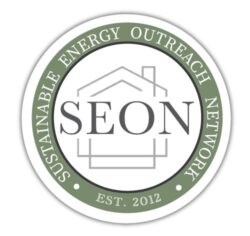Unit I: Think Like Air, Think Like Water: Building Science Principles Related to the Enclosure
Unit Description
TA follow-up to The Big Picture, this course gives students an introduction to specific strategies used to achieve durable and energy efficient enclosures.
Students will take away
- skills to describe the air tightness strategy used in a specific high-performance system and
- the ability to discuss strategies for proper moisture management given real world examples
The course will be taught by professionals in the field and will emphasize real-world applications. Classroom learning will be balanced with hands-on experience, and evaluations will reflect these methods.
Course Topics and Competencies
- Explain the concept of heat transfer (convection, conduction and radiation)
- Explain/identify the drainage plane system on doors and windows.
- Explain the moisture transport of liquid
- Identify transitions between water and air
- Explain convective air transport due to pressure differences from the three basic sources or forces that drive this: stack effect, wind, and fans of any sort (spot exhaust, unbalanced ventilation, leaky forced-air space conditioning.
- Identify proper material selection (IAQ, thermal mass, moisture)
- Identify assembly drying potential
- Identify air sealing and framing sequencing
- Control layers and the flow of heat, vapor, water air and solar gain through building components
- Understand hygrothermal analysis and the ability to predict the flow of heat and moisture across enclosure assemblies using computer software.
- the knowledge necessary to compare and contrast high-performance homes with code minimum conventional construction.
Learning Objectives
- Distinguish among the 3 energy flows and how they express in buildings
- Distinguish among the 4 moisture flows and how the express in buildings
- Identify how WRB and flashings must be connected for water and air control layer continuity
- Select building assembly components for material compatibility and drying potential
- Conduct a vapor profile on representative building assemblies
- Use the hygrothermal building assessment tool on existing home projects.
Unit II: The Big Picture: Integration of the Whole Building System
Unit Description
This course gives participants an overview of the building as a whole system.
Students will take away:
- skills to identify components of high-performance homes
- the knowledge necessary to compare and contrast high-performance homes with code minimum conventional construction
The course will be taught by professionals in the field and will emphasize real-world applications. Classroom learning will be balanced with hands-on experience, and evaluations will reflect these methods.
Topics and Competency Levels
- Apply knowledge of the thermal envelope by identifying on plan sets
- Demonstrate understanding of simultaneous consideration of energy, durability, comfort, and IAQ
- Convey understanding of integrated design and construction
- Identify air barriers and explain their importance. Identify and explain for each of the three basic barriers: air, thermal, and water. Reference the “pen test” as a way of thinking of/addressing continuity of these three barriers.
- Identify the various heating plants and explain impact on the system including where it penetrates the envelope.
- Identify ventilation systems
Learning Objectives
- Develop your own definition of high performance building, based on course concepts:
– Master the interplay among energy, durability, thermal comfort, and indoor air quality
– Apply the “pen” test to continuous control layers: water, air, vapor, and thermal
– Recognize space conditioning systems and how they integrate for high performance with the building enclosure - Be able to explain why mechanical spot and whole-building ventilation represent high performance rather than just added expense
If you are interested in scheduling a class with us, please contact Guy Payne: admin@buildingscience.org
See All Certification Courses
- SEON CERTIFICATION: HPB 101 – the basics of high performance building
- SEON CERTIFICATION: water, air and thermal continuous control layers
- SEON CERTIFICATION: carpentry level I competencies
- See more SEON courses & training
